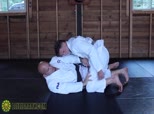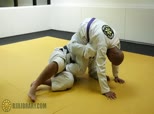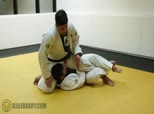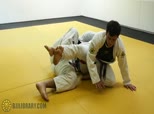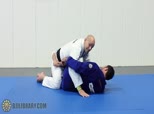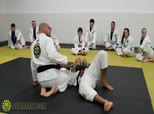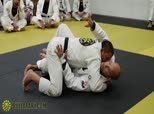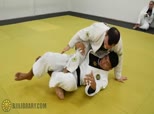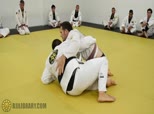Xande's Jiu Jitsu Fundamentals 3 - Protecting the Inside and Defending the Forced Half Guard
Add to Favorites Remove From Favorites 591 997 days ago
n this series Xande covers what he calls protecting the inside, which is his concept of defending from the bottom in half guard, mount, side control, etc., by wedging his elbow between his hip and his opponent. First in half guard, he shows his Landmark 2 position, which is staying on his side and bringing his elbow to his hip. Ultimately Xande will look to get to Landmark 3, which is his knee between his hip and elbow. While protecting the inside, it is crucial he stays on his side and does not allow his opponent to flatten him. After establishing Landmark 3, he can work his hip switch to recover his guard.
Masakazu Imanari Leg Locks 12 - Submission Series from Half Guard
Add to Favorites 1183 Remove From Favorites 1016 days ago
Masakazu shows a string of submissions starting from the half guard. After using his underhook to bump his opponent forward, escapes out the back to start attacking the legs. He strings together many submissions, including leg locks, neck crank and a shoulder lock.Inside the University 961 - Deep Half Guard Sweep when Opponent Grabs Your Pants
Add to Favorites 537 Remove From Favorites 1256 days ago
This time when Gustavo sets up his deep half guard, his opponent grabs his pants at the knee to control his leg and fend off the hook. Instead off feeding the lapel to his hand, he opens the gi and reaches in for a nice collar grip. Now he sits up, and sweeps his opponent very similar to a fireman's carry.Inside the University 959 - Why You Shouldn't Stay Flat on Your Back in Deep Half Guard
Add to Favorites 535 Remove From Favorites 1260 days ago
Gustavo breaks down why you shouldn't stay flat on your back while playing deep half guard. If you are flat, it's much easier for your opponent to step over your head and work on passing your guard. The only time you should be flat on your back is during a transitional movement.Inside the University 958 - Back Take from Deep Half Guard
Add to Favorites 453 Remove From Favorites 1262 days ago
Showing a second option after he sets up his deep half guard, Gustavo shows how he likes to take the back. Once he has his lapel grip and is ready to sweep, he hooks his opponent's leg with his foot and elevates it. He kicks his opponent forward and slides his head out the back. Now depending on his opponent's reaction, he looks to control the back, or maintain top position.Inside the University 957 - Deep Half Guard Sweep with Lapel Grip
Add to Favorites 511 Remove From Favorites 1262 days ago
To start this lesson Professor Gustavo goes over some basic rules for the deep half guard, including making sure you face the same way as your opponent, and not stay flat on your back. He feeds his opponent's lapel behind the leg and swims his front arm to the back to make the grip. To sweep he can either bridge or lift the leg and turn into his opponent.Xande's Esgrima Series 1 - Esgrima Fundamentals
Add to Favorites 580 Remove From Favorites 1274 days ago
This series is all about the esgrima, or underhook. Xande first breaks down some different ways he can use his arm for the esgrima and also how his body and hips should be positioned while using it.Inside the University 905 - Staying Connected to the Ribs
Add to Favorites 550 Remove From Favorites 1511 days ago
When using the pressure pass, Xande stresses the importance of staying connected to his opponent's ribs with his arm. Depending on his opponent's reaction and his own preference, Xande has many options to set up his pass from here, and his next point of control will be shoulder pressure.Inside the University 891 - Recovering Guard from the Superhold
Add to Favorites 644 Remove From Favorites 1532 days ago
Now Xande goes over how he uses these movement principles to recover his guard when his opponent has a superhold grip on him. First he bumps to create space so he can insert his shield, which he uses to push off and extend his body so he can insert his frame. Next he likes to bring in his pedal and look to recover guard or go right into setting up some attacks.Inside the University 853 - Getting to Deep Half Guard when Mounted
Add to Favorites 556 Remove From Favorites 1595 days ago
This lesson begins with Professor Victor Hugo showing how to get to deep half guard when your opponent has you mounted. After getting to his survival position on his side, Victor bridges and pushes the knee to trap the leg. Next he swims his arm under the leg and swivels his hips to get his body under the leg and into deep half guard.Inside the University 822 - Half Guard Sweep when Opponent has One Arm Under the Leg
Add to Favorites 583 Remove From Favorites 1644 days ago
Now Rene is in half guard and his opponent is under one of his legs, similar to an over-under pass. Rene makes a grip on the triceps and quickly switches his hips to face the other direction, sweeping his opponent in the process.Inside the University 779 - Details of a Proper Underhook
Add to Favorites 441 Remove From Favorites 1724 days ago
To wrap up the lesson, Gustavo shows a couple details on getting a good underhook. Instead of just reaching all the way across the back, he makes sure his shoulder is in his opponent's chest and he is hugging tight with his underhook. This will give him the leverage he needs to work his positions.
